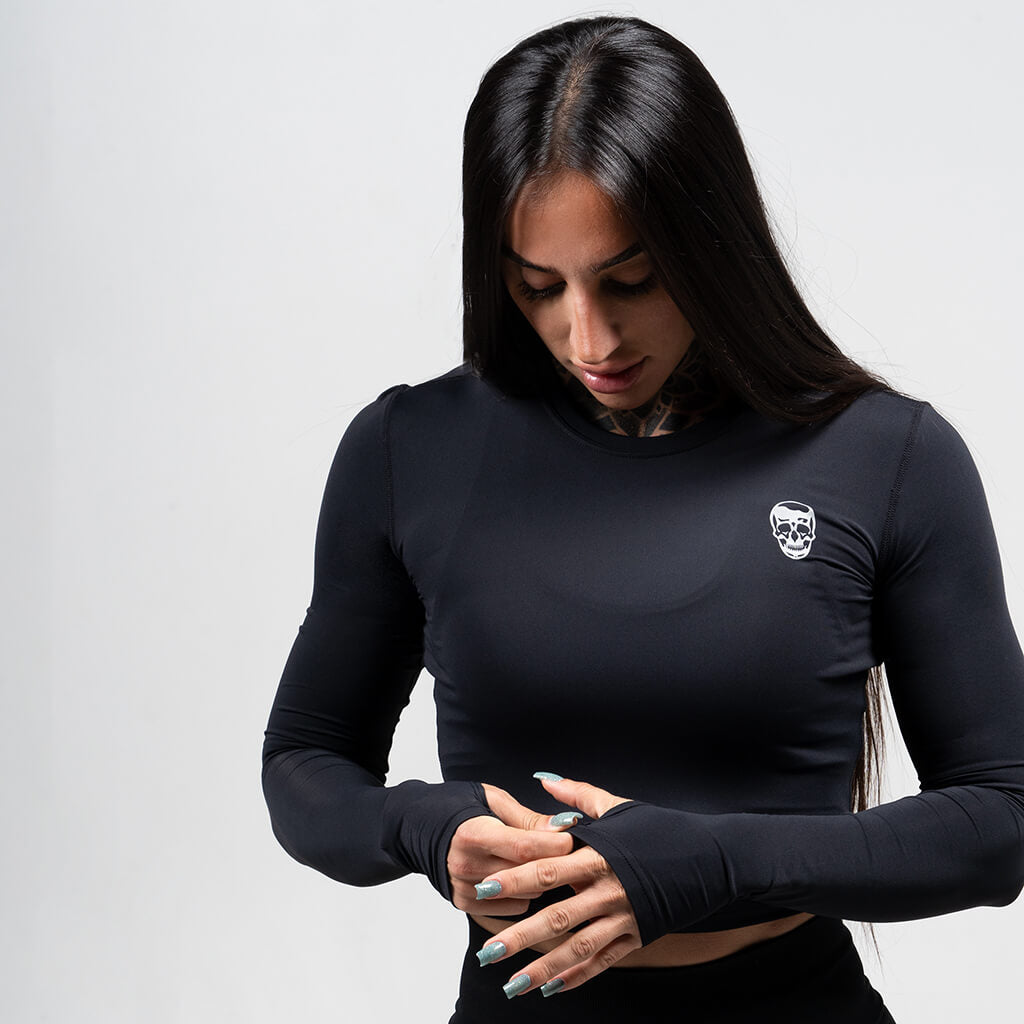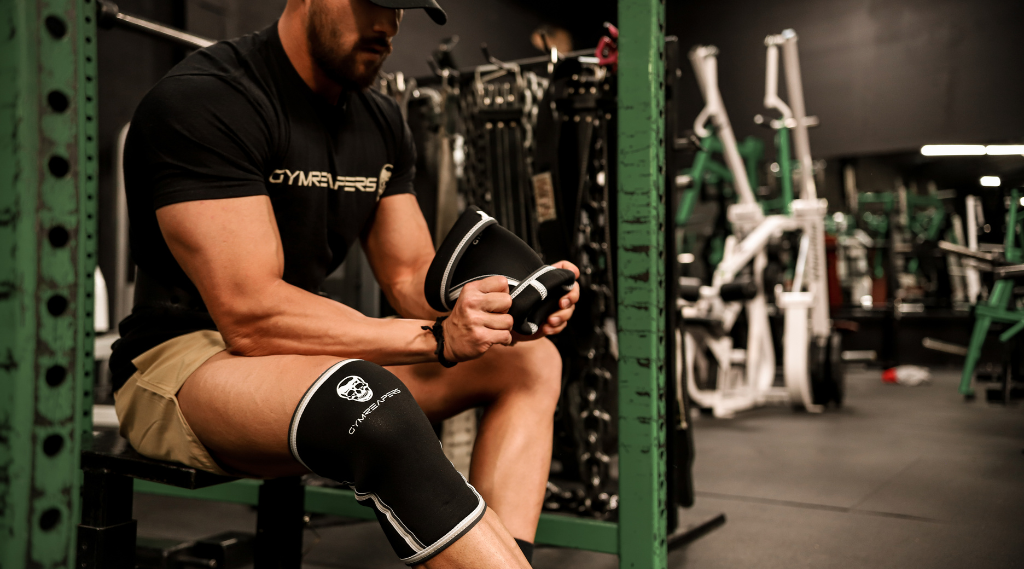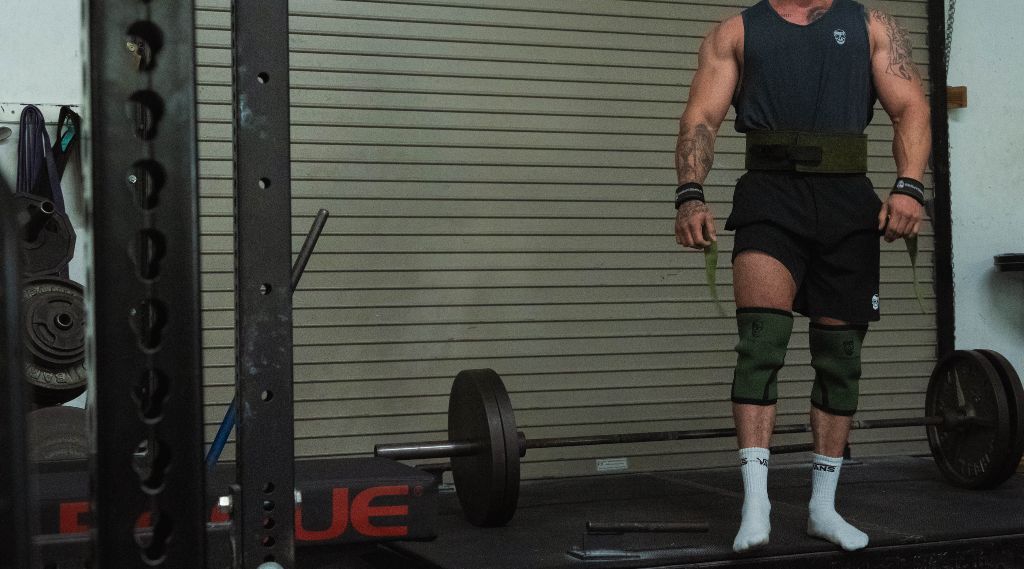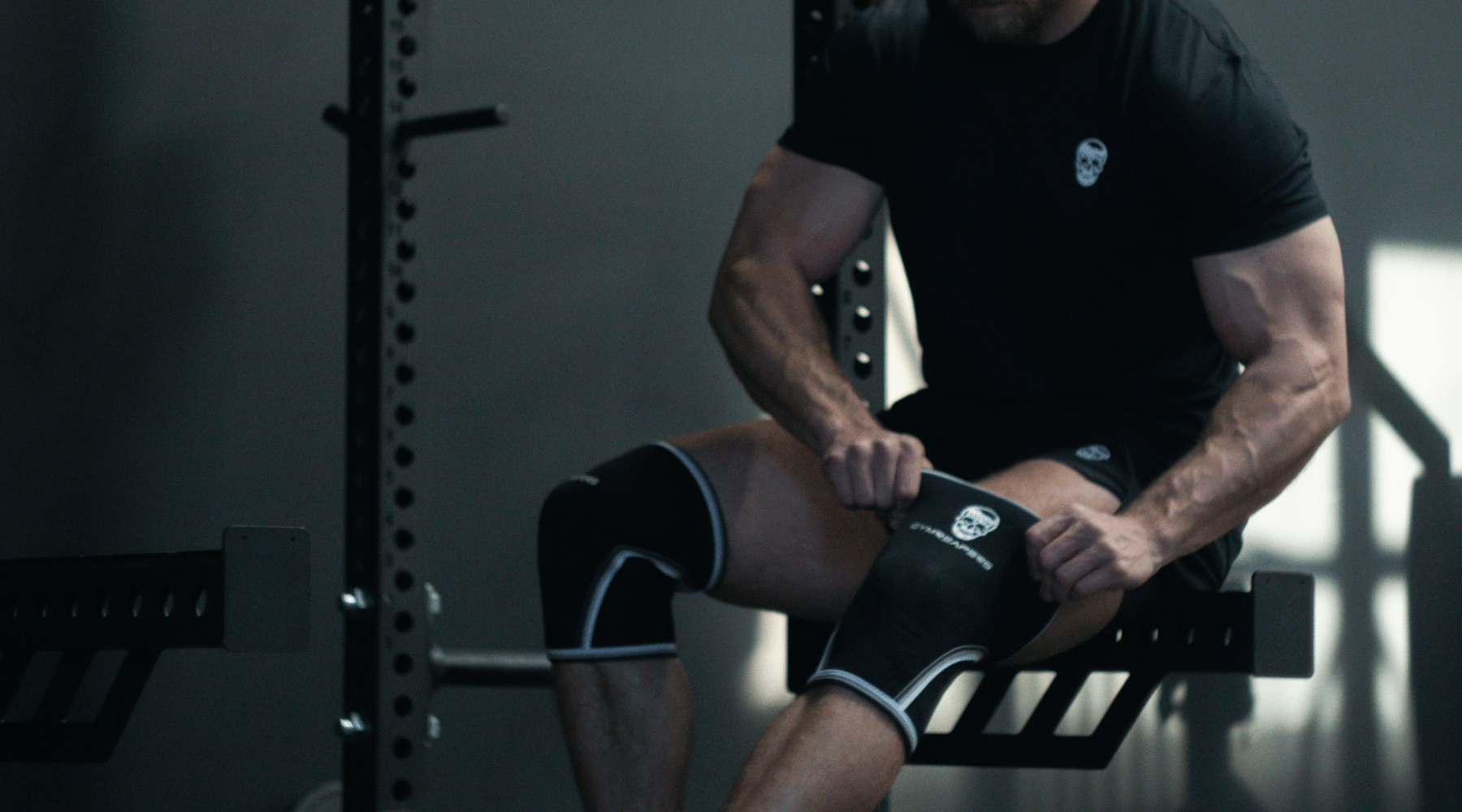Knee sleeves can start to smell absolutely rancid after a few too many wears, or when you accidentally leave them trapped inside your hot car.
Instead of throwing out the sleeves and buying a new pair, you can wash your knee sleeves to get them feeling (and smelling) like new.
The proper way to wash your knee sleeves is to hand wash them in a cleaning mixture of warm water, detergent, and maybe even vinegar. Let them soak in this mixture for a couple of hours, scrub them thoroughly, wring them out, and then let them air dry for 24+ hours.
To ensure you’re washing and drying your sleeves properly and avoiding unnecessary damage, I'll walk you through it step-by-step and provide some tips on how to pick detergents and temperatures.
Key Takeaways
Should You Wash Your Knee Sleeves?

The short answer is yes, you absolutely should wash your knee sleeves.
Most people who perform leg exercises, or other compound movements like squats or deadlifts, use their knee sleeves at least once per week. Although this may not sound like a ton of use, knee sleeves don’t take long to get dirty and are very smelly.
Once your knee sleeves have trapped enough of your sweat and gym dirt in them that you can start to smell their stink wafting out of your gym bag and lingering on your knees once you take them off, it’s time to wash them.
Depending on the brand, and the specific material that they are made out of, your knee sleeves may have different care instructions.
However, the one common feature is that they are all made out of a fabric that can trap sweat. This means that they can all get smelly and trap bacteria, so every brand of knee sleeve can benefit from regular washing.
4 Considerations For Washing Knee Sleeves

1. Fabric Type
The biggest consideration that you need to take into account when washing your knee sleeves is simply knowing what they are made of.
Most companies use some blend of elastic, rubber, and neoprene in their knee sleeves.
This variability of materials is the main determining factor that changes whether the brand allows for machine washing, or may recommend hand washing only.
As such, the provided care instructions and material of the sleeves should be your guiding beacon when deciding how to wash your knee sleeves.
For example, Gymreapers 7mm Knee Sleeves are made from top-grade Neoprene material that should be hand-washed and air-dried to maintain their stiff, compressive fit and maximize their longevity.
2. Temperature
A further consideration is the temperature of the water when washing your knee sleeves.
I recommend using warm water when hand-washing your knee sleeves because this will clean them better than colder water, but will not damage them the same way that scalding hot water would.
Note that, while I heavily recommend against machine-washing, you should only wash on the cold setting if you choose to go the machine-washing route. This is because the high heat from a washing machine will degrade the rubber in the sleeves (potentially causing shrinkage or brittleness).
That said, these are general recommendations so I always recommend reading both the care instructions on your sleeves and on the detergent you’re using to ensure you are covering all of your bases.
3. Type of Detergent
The type of detergent you use on your knee sleeves will mostly depend on the brand you wear and the care instructions that they provide. That said, you can almost always get away with a mild detergent (or a specialist neoprene/wetsuit detergent).
I typically recommend any laundry detergent that specifically brands itself as a “sports” detergent (like Tide Plus Febreze Sport Active detergent), since these are typically the best for tougher gym products that may be dirtier and stinkier than your average laundry item.
In addition to detergent, I have added vinegar to my cleaning mixture when my sleeves are particularly dirty or stinky. Adding in 2-4 ounces of distilled white vinegar will work magic for eliminating unwanted stenches when your detergent just isn’t cutting it.
4. By Themselves, Or In A Load Of Laundry?
I very strongly advise against putting your knee sleeves in the washing machine. Although some machines do have gentle cycles, this just increases the risk of damaging your sleeves without much additional benefit.
If you do decide to machine-wash your sleeves, I recommend washing them by themselves and placing them in a laundry bag to better protect them.
Even if you choose to machine-wash your knee sleeves, you should never put them in the dryer. Dryers run a high risk of damaging your sleeves, and also will very likely shrink them. This will only spell trouble.
Step-By-Step Guide To Washing Knee Sleeves

Step 1: Gather Your Items
First, you need to gather all the items necessary to clean your knee sleeves. This will include your sleeves, laundry detergent, a clean and non-abrasive cloth, gloves, and a bowl or sink large enough to submerge your sleeves.
Step 2: Fill Your Container Or Sink With Warm Water
Next, you will fill your container with warm water. I usually use my sink, as this is easiest. However, if your sink stopper does not hold water well, any large container will do.
Check your specific detergent’s label, but most recommend using lukewarm water as it is the best for removing stains and dirt. Be careful with the temperature, as very hot water will scald you and may put your sleeves at a higher risk of shrinking.
Step 3: Mix the Detergent Into The Water
Next, mix the detergent in warm water and make sure that it has fully dissolved.
Follow the instructions on the package when deciding how much detergent to use for your volume of water.
At this point, I also like to agitate the water a bit to ensure that the water/detergent mixture is foaming.
Step 4: Submerge And Soak Your Knee Sleeves
Fully submerge your knee sleeves in the mixture. I like to have them soak for at least an hour so that you can be sure the bacteria has been neutralized.
This will also help reduce any stink your sleeves have accumulated.
Step 5: Scrub Your Sleeves with A Clean, Non-Abrasive Cloth
After they have soaked, use your clean cloth to rub the cleaning solution all over the sleeves.
At this stage, I recommend wearing gloves to save your hands from any damaging chemicals.
Step 6: Rinse With Cold, Clean Water
Once you feel like your sleeves have been adequately cleaned, make sure to thoroughly rinse them out.
I also recommend squeezing out any excess water that they may have absorbed. This will help them dry faster and will reduce the risk of leftover detergent being trapped in the fabric, which can irritate your skin when wearing them.
Be sure not to twist or stretch the sleeves unnecessarily when squeezing out the excess water. This can damage them and ruin their intended shape and elasticity.
Once the water coming off your sleeves is clear, you can move on to the drying process.
Step 7: Turn Inside-Out and Air Dry
I always recommend air drying your sleeves in a temperature-controlled, shaded area. Keep them out of direct sunlight because sun exposure can shrink the material, similar to machine drying them.
I also recommend turning your sleeves inside out when drying them. This will help them air out even more and can help avoid trapping stenches in the fabric.
Try and leave 12-24 hours of air-drying time before you wear your knee sleeves to ensure that they are fully dry.
Note that this is a hand-washing step-by-step approach. I never recommend machine washing your knee sleeves unless you absolutely have to, and the care instructions specifically state that they can be machine washed.
This is simply because the spin-cycle of machine washing can damage the sleeve, as the knee sleeves become quite bulky when wet and could get caught up or damaged by the wringing function.
How Often Should You Wash Your Knee Sleeves?

How often you wash your sleeves will really depend on a variety of factors, including what you use your knee sleeves for, their material, and your own hygiene.
A general rule of thumb is to wash them about once every 2 weeks, or every 4-5 uses if you find that they get dirty more quickly. This is generally acceptable, as the sleeves shouldn’t be washed too frequently (this will reduce their lifespan) but should be washed well before they become unbearably stinky.
As a personal example, I use my knee sleeves for powerlifting workouts. I currently squat 2x a week, but the larger rest time while squatting means that I don’t sweat as much as most people in the gym.
So, I only wash my sleeves after every 6-8 sessions or 3-4 weeks, but I would wash them much more if I were moving and sweating as much as a CrossFitter or Bodybuilder.
How Long Do Knee Sleeves Take To Dry After Washing?
Although I never recommend machine drying, if you’re in a pinch and need your sleeves dry as fast as possible, they can be dry and ready to use within 30-50 minutes.
However, if you air dry your knee sleeves after hand washing them, you’ll be waiting around 12 hours or more for them to dry and be ready for use.
You should wait until they are fully dried out before using them again, to avoid breaking down the material or trapping the detergent chemicals within them.
I usually wash my sleeves before bed the day before a rest day. This takes a very small amount of planning and gives them plenty of time to fully air-dry out before using them in my next training session.
Can You Iron Your Knee Sleeves?
You should not iron your knee sleeves to reduce the risk of damaging the sleeves unless your knee sleeve indicates that they are safe to iron. Though I have to admit, I’ve never seen sleeves that indicated they were safe to iron.
Most knee sleeves are made from a neoprene blend and rely on their flexible and elastic nature to give you the most benefit. As such, the heat from machine drying, prolonged sunlight exposure, or ironing is often enough to ruin the shape and structure of your knee sleeves.












Leave a comment
All comments are moderated before being published.
This site is protected by hCaptcha and the hCaptcha Privacy Policy and Terms of Service apply.